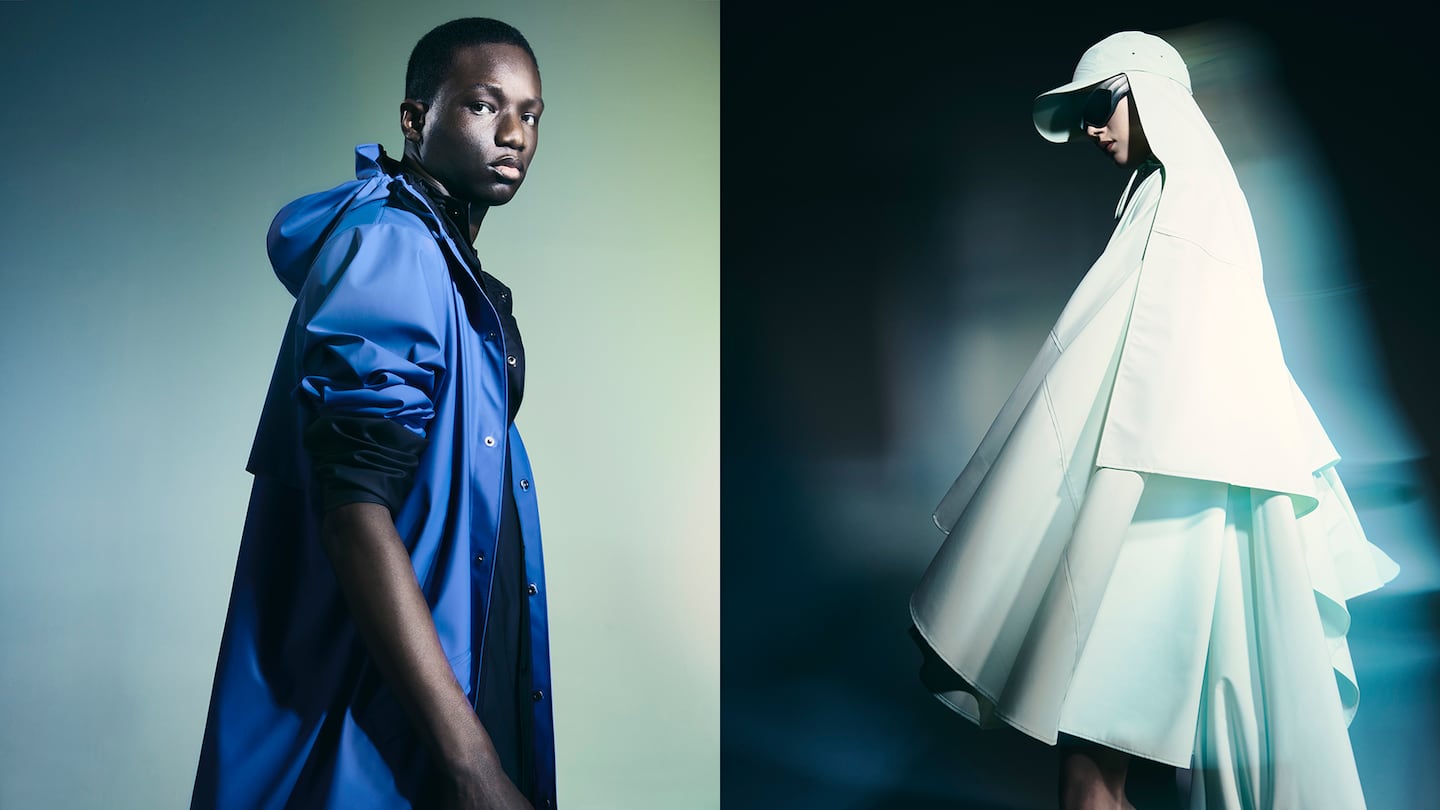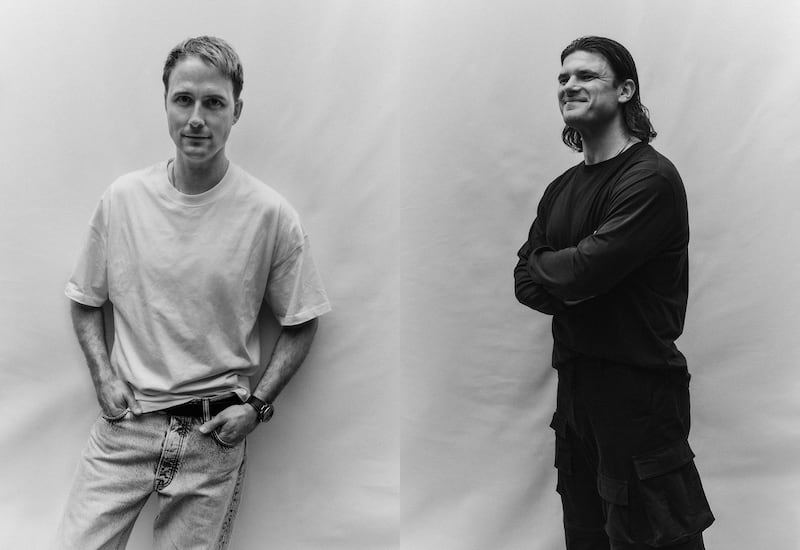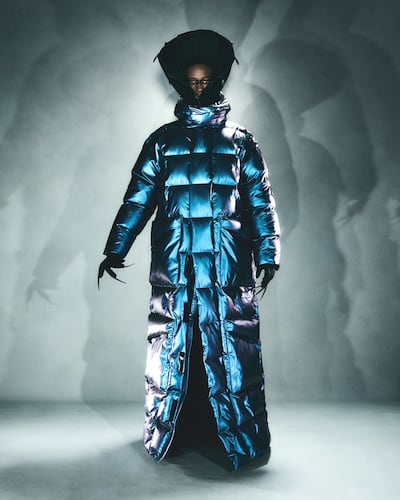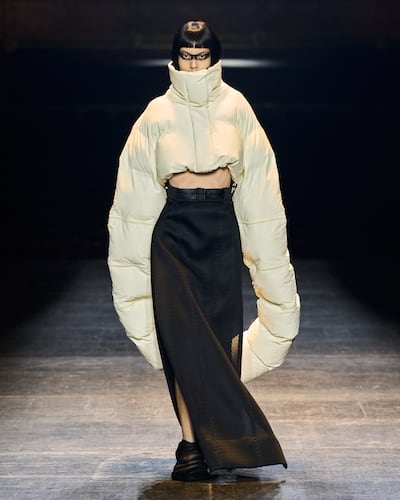
The Business of Fashion
Agenda-setting intelligence, analysis and advice for the global fashion community.

Agenda-setting intelligence, analysis and advice for the global fashion community.

If a commuter in Copenhagen, Paris or London is wearing a rubber-coated raincoat around the city, there’s a fair chance it’s a coat from Rains.
Founders Philip Lotko, Daniel Brix and Kenneth Davids have steadily scaled the self-funded niche rainwear concept they launched in 2012 into a lifestyle brand with mass appeal: sales are on track to grow 41 percent to hit €100 million in revenue this year, while EBITDA profits are forecast to hit €22 million.
Its growth trajectory over the past three years has defied trends in the global jacket and coats market, which isn’t set to recover to pre-pandemic levels until 2024, according to Euromonitor forecasts. Recent success has been fuelled by expansion into apparel categories like tops and trousers and efforts to boost its accessories business, Lotko and Brix said.
Now the entrepreneurs hope to take their 10-year-old brand to the next level, with ambitions to double sales to over €200 million within four years. Expanding in the US is central to their plans — but it won’t be easy. America is a competitive and challenging market, with rising living costs set to hamper consumer spending.
ADVERTISEMENT
Yet part of Rains’ magic lies in its functional design and simple aesthetic. The brand harnessed the mainstreaming of minimalist branding to put a style-conscious spin on a utilitarian, accessibly priced product. That could help the brand weather turbulence in the broader market, as consumers may emphasise value and functionality in uncertain times. Meanwhile, newer categories for the brand, including clothing and accessories like hats and scarves, provide further opportunities for growth.

Lotko and Brix met at Teko design school in Denmark, working on small-scale projects selling sweatshirts and tees before landing on the idea of starting a raincoat business. The pitch was to elevate an everyday product into a more desirable purchase using sleek Scandinavian design and branding. The brand was born from a unisex rubber-coated rain poncho, soon adding its flagship snap-fasten raincoat — instantly recognisable for its minimal silhouette and matte-finish look — to the line.
When Rains hit the market, it offered something not many brands were doing at that time: a lightweight coat that was practical in function and stylish in form at an accessible price. It was marketed as the perfect choice for urban commuters who didn’t want to spend Burberry prices but didn’t quite need the technical chops of outdoor performance brands.
“There was something about taking this very old-fashioned fabric…and bringing it into a modern context,” said Lotko.
What worked about Rains was its appeal to “normal” people. Names like Patagonia and the North Face — which at the time weren’t yet desirable labels from a style perspective — spoke to the outdoor sports enthusiast, while luxury brands catered to a trend-conscious crowd.
“I don’t think our aim was to create a fashion company in the beginning,” said Brix. “Our approach was obviously contemporary, very visual and very brand focused — but not necessarily fashion.”

Lotko and Brix spent the initial years developing a brand identity based around its rainwear DNA. They turned a profit after a year in business, meaning they wouldn’t have to rely on external capital to scale their bootstrapped brand. Retaining full control of the company meant they could take a long-term view, making decisions that would help support future ambitions without having to answer to investors looking for a quick return.
This included shoring up the brand’s supply chain, with Lotko and Brix investing in a joint venture in China with a local manufacturing partner to vertically integrate production. Tie-ups with wholesalers drove sales, but the duo also opened a handful of stores in Denmark early on, growing its direct distribution to 15 percent of the business.
ADVERTISEMENT
Five years in, Rains was hitting about €20 million in annual revenue, but the vast majority of sales were concentrated in its home market and other Scandinavian regions, while the pacey growth momentum seen in early days was beginning to slow. Thus, in August 2017, the company appointed a chief executive — Jan Stig Andersen — to steer the company through its next stage of growth.
“We professionalized the whole organisation at a very early stage, and gave a lot of the control of the operation to someone experienced,” said Brix. “That made a huge difference for the development we’ve been through the last couple of years.”
Under the leadership of Andersen, Rains transitioned from a rainwear company to a lifestyle brand, optimising the internal structure of the company and growing its direct-to-consumer distribution to drive 55 percent of sales. Today the brand has about 30 stores across Europe. It also inked new wholesale partnerships with retailers like Ssense, Harrods, Bergdorf Goodman and Le Bon Marche, helping accelerate growth in Germany, the UK and France.

On the product side, Rains bolstered its accessories assortment of rubber-coated backpacks and duffle bags, while diversifying its outerwear proposition to include higher-priced quilted jackets and parkas. A push in apparel added sweatsuits, fleece pullovers and waterproof trousers to the mix.
The label began showing at fashion week, debuting in Copenhagen in 2020 before moving to the Paris schedule last year. To the industry, it signaled global ambitions for the business, while also helping to elevate the brand positioning and get the brand in front of a “powerful audience” of stylists, editors and buyers, said Lotko. Internally, however, it ushered in a new way of approaching product development.
“We needed to be more future-oriented. It’s kind of transformed the company from always looking at historical data, to looking into the future. And I think that made a huge difference,” said Brix. “It had a vital and strong effect on how we started to look at ourselves as a brand,” added Lotko.
Rains continued to grow throughout the pandemic, doubling sales between 2019 and 2021 — a stark contrast to the performance of the wider jackets and coats market, which contracted 18 percent in 2020, according to Euromonitor International. Today, newer categories are helping drive brand growth. Bags, for example, now make up 50 percent of the business, said Brix.
This year the focus is on growing sales in the vast US market. After nurturing Rains’ success in Europe, Andersen is moving to take up the role of CEO North America, while Steen Borgholm, former Ecco Group chief, will succeed him as global CEO on May 1.
ADVERTISEMENT

Elsewhere, to facilitate future growth, the brand is building a new HQ in Denmark that has capacity for about 750 employees. Over the next three years, the company aims to grow its head office headcount from 130 to 200 employees.
“Growth is not our biggest challenge,” said Brix. “It’s now maintaining the quality in the brand presentation and the product [as we scale]. It takes another kind of skill set.”
Expanding into the US won’t be easy. Gorpcore brands enjoy strong traction there, while the department stores that dominate the multi-brand landscape have been losing ground for years. This year, consumers are expected to pull back on discretionary spending in the face of the rising cost of living. Price sensitivity will be a sticking point for consumers when buying coats and jackets, with shoppers becoming more discerning about the cost per wear of new purchases, said Suzi Gardner, senior fashion research analyst at Euromonitor International.
However, “the durability of outerwear like rain jackets and practical coats will prove [favourable],” Gardner said. Arguably Rains is better placed than more trend-led brands, given its simple aesthetic, the functional nature of its core products and its accessible price point.
The brand already has stores in the US — three in New York, one in Chicago — and is gaining more traction in America than ever before, the Lotko and Brix said: having a dedicated North America chief will be the key to boosting momentum further, they added.
“You need to reach a certain size before you have the power and the resources to do the US right,” said Brix. “Now, it’s the next natural step for us.”
Editor's Note: This story was updated on April 27, 2023, to clarify the attribution of the quotes.
From Kassl Editions to Common Leisure, a flurry of emerging labels are challenging mainstay names like Moncler and luxury brands like Gucci in the fast-growing outerwear category.
For every brand that is able to diversify past its first success, there are dozens more that putter out. Here’s a six-point plan for navigating what happens after a product becomes a bona fide winner.
While the explosive popularity of puffer jackets is a boon for outerwear brands like The North Face and Moncler, the trend highlights some uncomfortable truths about South Korean society.
The Los Angeles-based accessories label has been a well-kept secret in the industry, but founders Yang Pei and Stephanie Li are hoping to change that through new acquisitions, opening brick-and-mortar stores and using AI to speed up the design and production process.
Designer Carly Mark sparked conversation about what it takes to make it as an emerging designer in New York when she announced she was shutting her ready-to-wear line and moving to London. On Thursday she held her last sample sale.
To stabilise their businesses brands are honing in on what their particular consumer wants to buy, introducing new categories and starting conversations.
That’s the promise of Zellerfeld, a 3D-printing partner to Louis Vuitton and Moncler that’s becoming a platform for emerging designers to easily make and sell footwear of their own.